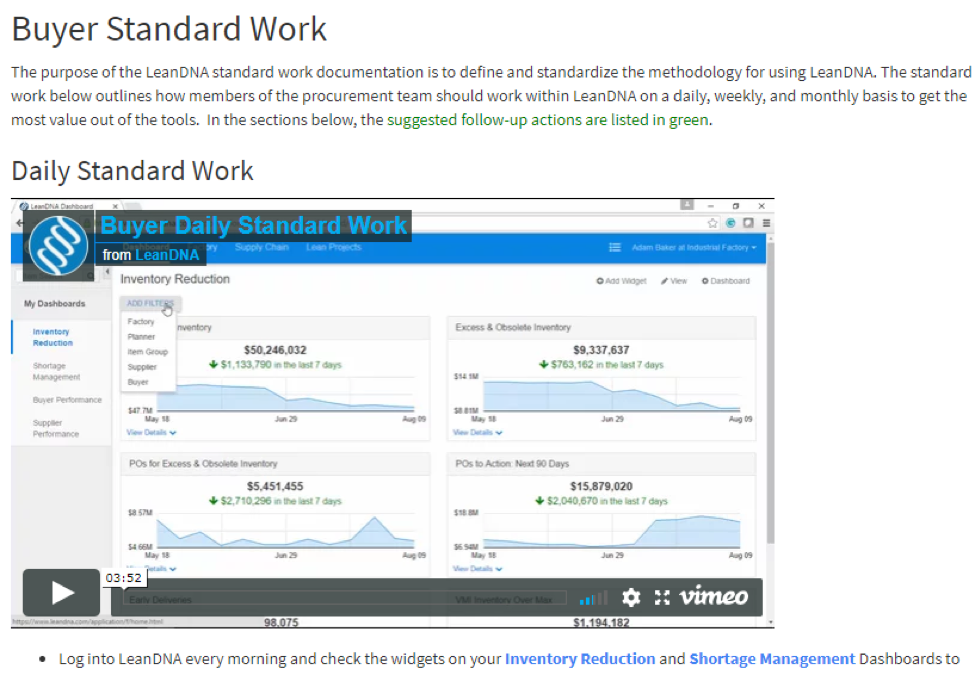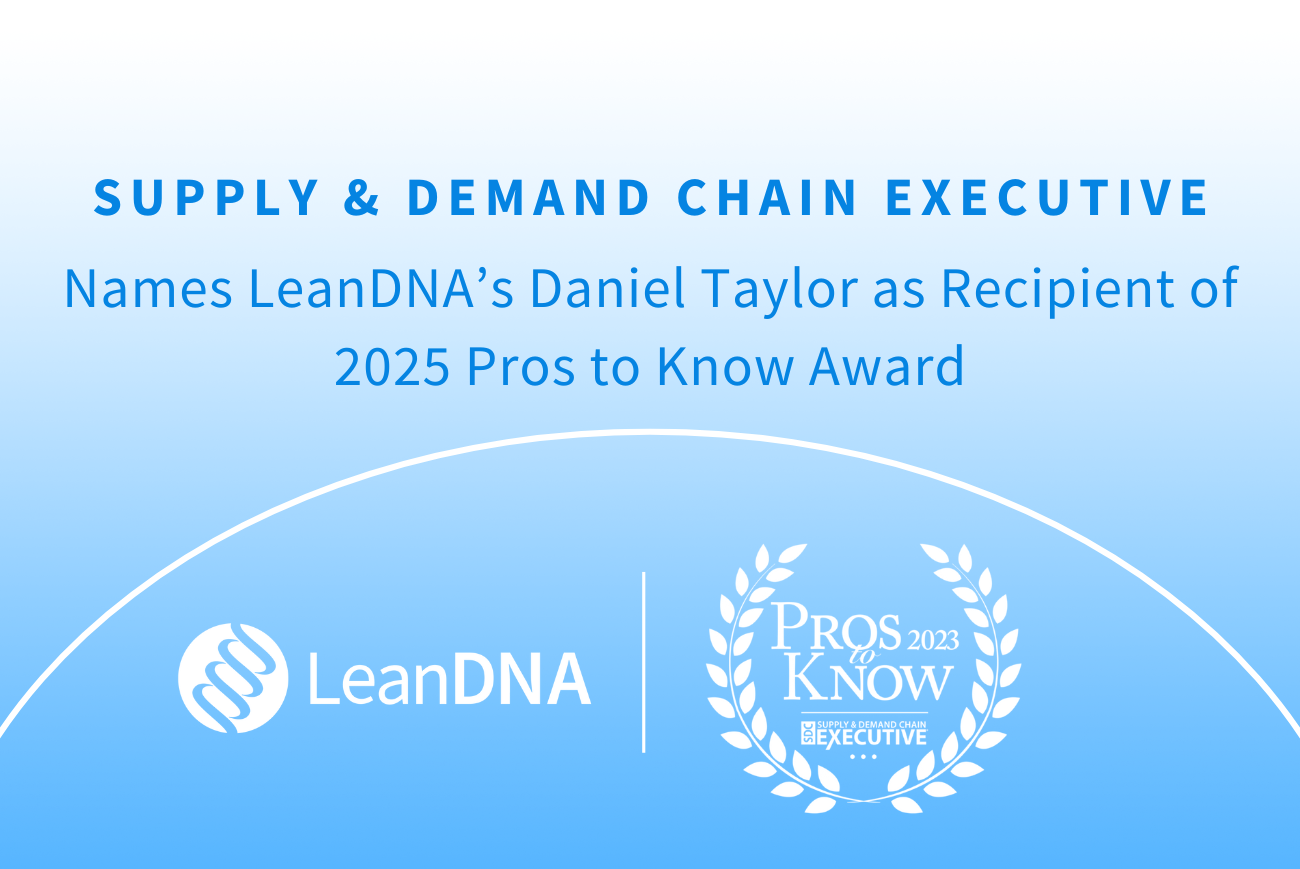Tools for supply chain management improvements
“Coming together is a beginning; keeping together is progress; working together is success.” – Henry Ford
What is the purpose of Standard Work for Manufacturing?
Standard Work wasn’t a supply chain business term in the 1900s, but if it had been, you better believe Henry Ford would have had a quote about it. Ford, a major proponent of the assembly line, knew the value of placing his workers in the best possible position every single day.
A key component of the Kaizen philosophy, Standard Work, does just that. It puts supply chain teams on the same page, eliminates unnecessary action, and ensures everyone moves forward together.
How do you develop Standard Work for your supply chain team?
Forming a Base for Standard Work in Supply Chain
The chief benefit of Standard Work is that it details the steps for what your team should be doing every single day. This becomes the best practice framework for continuous improvement and outlines what your team needs to do to stick to your process.
In order to develop Standard Work with your team, the process must be plainly documented. If you are the Supply Chain Manager, these are the questions you need to answer:
- What should a buyer do each day?
- What tasks do buyers need to perform every week?
- What will buyers do monthly?
The answers need to be communicated clearly. Cover those steps in detail and you will create a baseline for any task your team will need to complete.
Outlining Your New Standard Work
Working with leadership to set Standard Work is one of the most important parts of implementing a completely new process or updating existing processes alike. This helps team members see the forest through the trees and know how to get the most out of the tool.
Here are the tried-and-true steps to creating a new Standard Work for supply chain, the 5 D's of Standard Work:
- Determine your most important goals
- Diagnose an area of focus where action can be taken to achieve your goal
- Direct the team on which data, reports, process, etc. will be used
- Designate who will take each action, and what actions need to be taken daily, weekly, and monthly
- Document the information
Now, here’s an example of Standard Work for supply chain data analytics that we create with our partners while rolling out LeanDNA. LeanDNA gives your team access to a world of data and reports, so Standard Work helps deliver the most value in the shortest amount of time.
- Determine your most important goals
- Our most important goal is to optimize inventory
- Diagnose an area of focus where action can be taken to achieve your goal
- To achieve this goal, we need to find which items are obsolete
- Direct the team on which data, reports, process, etc. will be use
- We will use the LeanDNA Excess & Obsolete Inventory Report to automatically create the list of which items are no longer being used
- Designate who will take each action, and what actions need to be taken daily, weekly, and monthly
- Buyers Tom, Dick, and Harry will use the report to monitor their parts each day. Each week, they will create a list of the obsolete parts they are responsible for and contacting the supplier to see what can be returned. Each buyer will share a report on the reduction of obsolete items every month.
- Document the information
- Below is an example of a page on the online knowledge base that LeanDNA uses to document Standard Work. It contains a video and step-by-step instructions, as well as links to other relevant information.
_____________________________

_____________________________
This creates your Standard Work and arms a team with the tools, the process and puts them in the best position to achieve optimal success for the team.
Don’t Just Set it and Forget It
One of the most important aspects of developing Standard Work is that is it a fluid document. You don’t just roll it out and walk away.
Your business is constantly changing and improving. As goals change, so do the steps to get there. Standard Work not only reinforces the process, but it highlights the goals and what success will look like.
Beyond that, Standard Work requires, well, work. Any time you roll out a new process, tool, or procedure, it is going to need support. A good Standard Work is well-documented, well-understood, and well-supported by leadership. Without a strong supportive framework, your new Standard Work could become overwhelming.
Get the tools for supply chain management success
“Before everything else, getting ready is the secret of success.” – Henry Ford
Ford knew that a business could not be successful unless they were prepared. Standard Work is how you can make sure your team is ready, willing and able.
Better factory management starts with agile workflows.
When teams gain access to clear and accurate information, they start to standardize their daily work, hold each other accountable, and align on a shared set of rules and principles. The better the processes that are put in place, the better results that supply chain managers will see.
Learn more about standard role-based workflows.
Today, it is necessary to utilize collaborative analytics to connect supply chain teams.
In supply chain procurement, connectivity is vital to the success of a manufacturing company. In the increasingly complex global supply chain, the top manufacturing companies are using emerging collaborative analytic softwares to gain a competitive edge.
Learn more from Aerodef.



